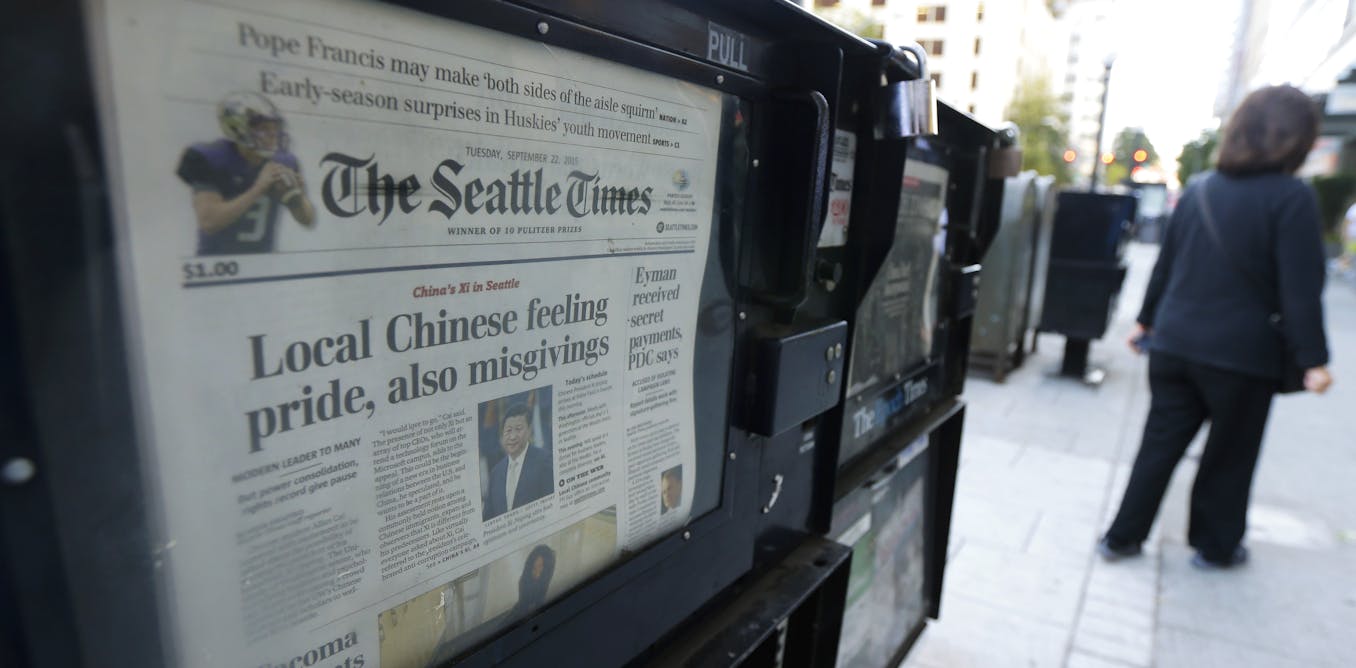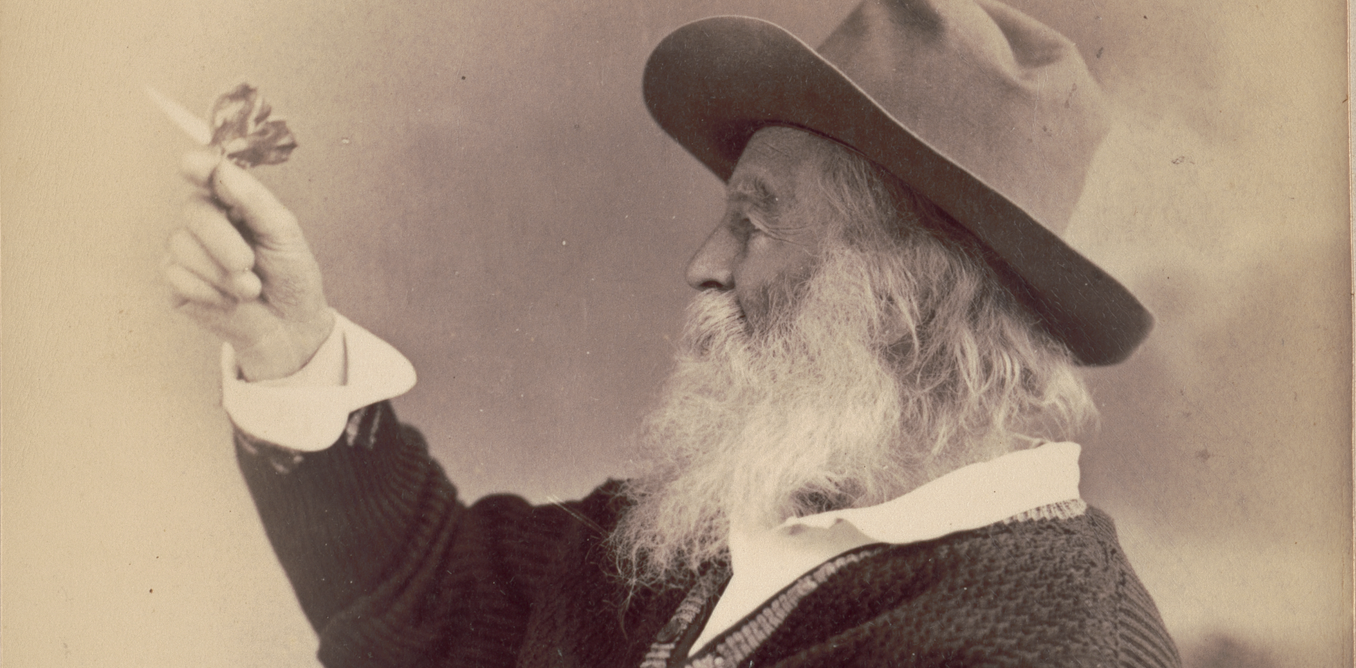Republicans in Washington have their sights – once again – on defunding public media.
On May 1, 2025, President Donald Trump issued an executive order calling for the termination of taxpayer support for the Corporation for Public Broadcasting, the nonprofit that helps fund American public media stations of all sizes, from NPR and PBS, to smaller outlets like WBHM in Birmingham, Alabama, and KGOU in Norman, Oklahoma.
Many Republicans have denounced public media programming as biased, outdated or simply unnecessary.
Beneath those familiar talking points lies a long-standing assumption: that the market already provides “abundant, diverse and innovative news options,” as the president’s executive order put it.
That assumption is wrong. And the story of media in Washington state reveals why.
Public media’s expanding footprint
As a communication scholar at the University of Washington, I’ve studied journalism in Seattle and across Washington state for the past decade.
During that time, I’ve watched for-profit journalism struggle to meet the needs of the region. For this reason, local news outlets have increasingly turned to other sources of revenue.
The shift has been striking. Just 10 years ago, about 10% of all full-time journalists in Seattle worked for local, nonprofit affiliates of NPR and PBS. Today, that figure is closer to 30%.
That growing share reflects investments by NPR affiliates like KUOW and KNKX and public television station Cascade PBS, which have expanded their coverage of critical topics like homelessness and immigration. Federal support plays a small but significant role, making up between 5% and 10% of their budgets. The rest of their funding comes from a combination of donations, sponsorship and philanthropic grants.
However, public media’s expanding footprint is also a symptom of collapse elsewhere: corporate cutbacks at commercial broadcast media networks and stations, the shuttering of community newspapers and the disappearance of alt-weeklies, which sometimes challenged mainstream political or cultural narratives.
To be sure, public media has not and cannot replace everything that has been lost. But it has helped fill the void left after once-iconic outlets like the Seattle Post-Intelligencer underwent huge layoffs.
Donors, tax dollars plug holes
Public media outlets are only one prong of an increasingly noncommercial local news system. In the past, local media were dominated by commercial players that garnered the lion’s share of their revenues through advertising.
Now, more and more journalism jobs in the state of Washington, including those at commercial outlets, are sustained by philanthropy and government spending. The Seattle Times – which is still, by far, the largest newsroom in the city – pays 30 of its reporters through philanthropic funding. That’s roughly 20% of its entire newsroom. The national nonprofit Report for America has, since its inception in 2018, placed 13 reporters in towns and cities across Washington to cover underserved topics like rural health and veterans issues.
Meanwhile, the Murrow News Fellowship, launched in 2023 and funded by Washington’s state Legislature, has enabled 16 full-time journalists to be hired for two-year stints in commercial, nonprofit and public media newsrooms around the state.
Universities are also playing a role. Long a pipeline into the profession, undergraduate and graduate journalism programs have increasingly become a piece of the local news infrastructure. Roughly 10% of all state Legislature coverage in Washington, for example, is now produced by undergraduate student journalists. Many report for newsrooms that no longer have a dedicated journalist in Olympia, the state’s capital.
AP Photo/Ted S. Warren
News isn’t always profitable
All of these examples – public media, philanthropic support for nonprofit outlets and jobs at for-profit media enterprises, and student journalism – meet needs that for-profit journalism can no longer address on its own.
Of course, no funding model is perfect. Last year, KUOW laid off three newsroom staffers due to a budget shortfall. Cascade PBS journalists are threatening to strike over low pay. Some critics worry that philanthropic funding can subtly shape news organizations’ coverage priorities.
But to pretend the market can fix these problems is to ignore that it played a key part in creating them. When a newsroom job disappears, it’s not because watchdog journalism has lost its civic value. It’s because it became hard to monetize.
Professional reporting takes time and doesn’t inherently deliver high traffic or quick profits. But it does inform citizens, promote government accountability and strengthen communities.
The push to defund NPR and PBS stems in large part from long-standing Republican antipathy toward public media. But it also rests on a belief that journalism should only survive if it can compete in the marketplace.
In Washington state, we’ve already seen what happens when we rely on markets alone: fewer reporters, less oversight and a growing amount of AI-generated news that provides no original reporting.
If these defunding efforts succeed, they will likely do real harm to local news. KNKX has warned that it would lead to “difficult decisions and sacrifices at the expense of access to local journalism.” KUOW has signaled that it would “immediately need to raise 1 million dollars” to offset the loss in federal funding.
Translation: It could lead to fewer reporters and less reporting at a time when more of both is needed.




